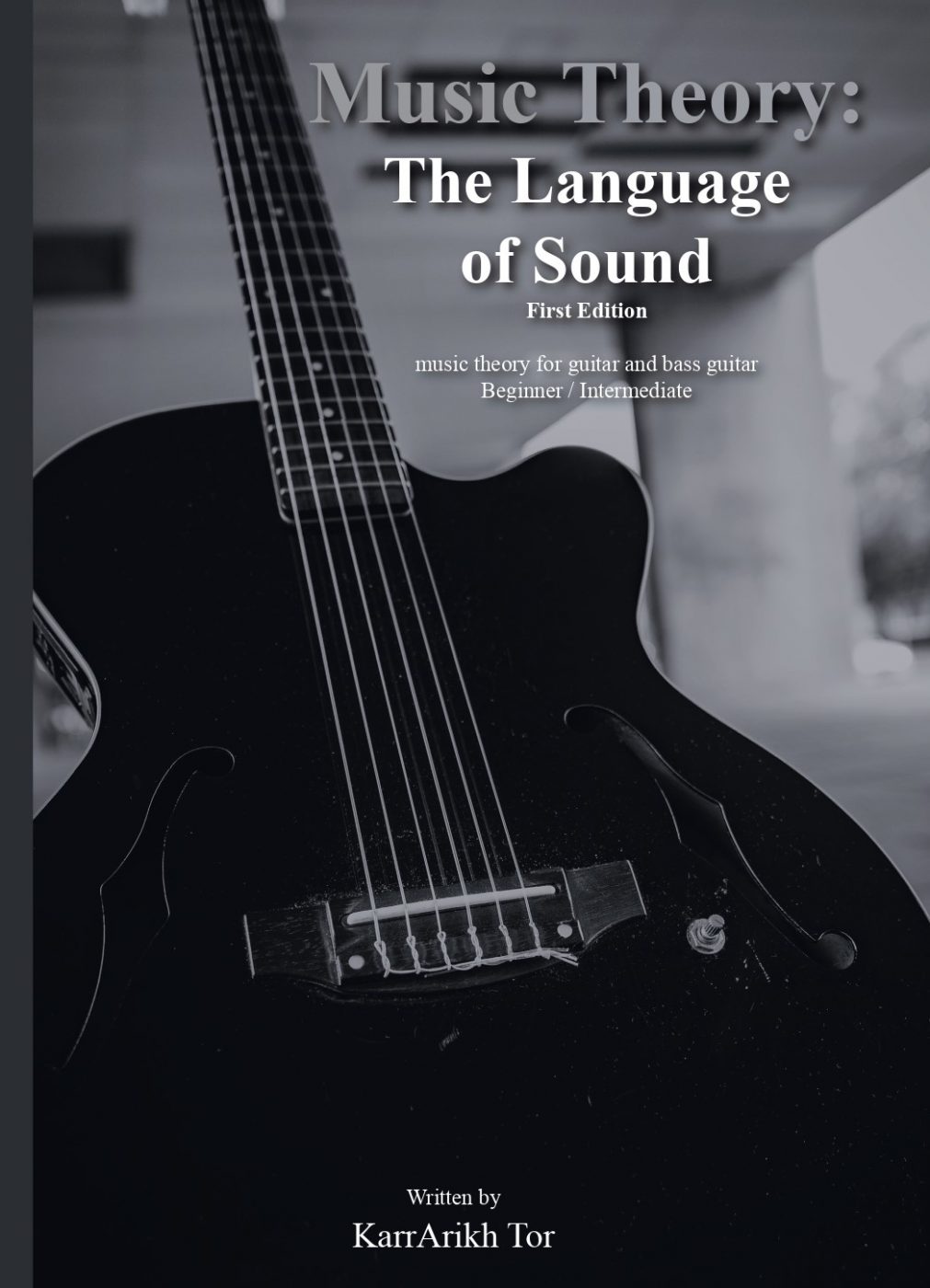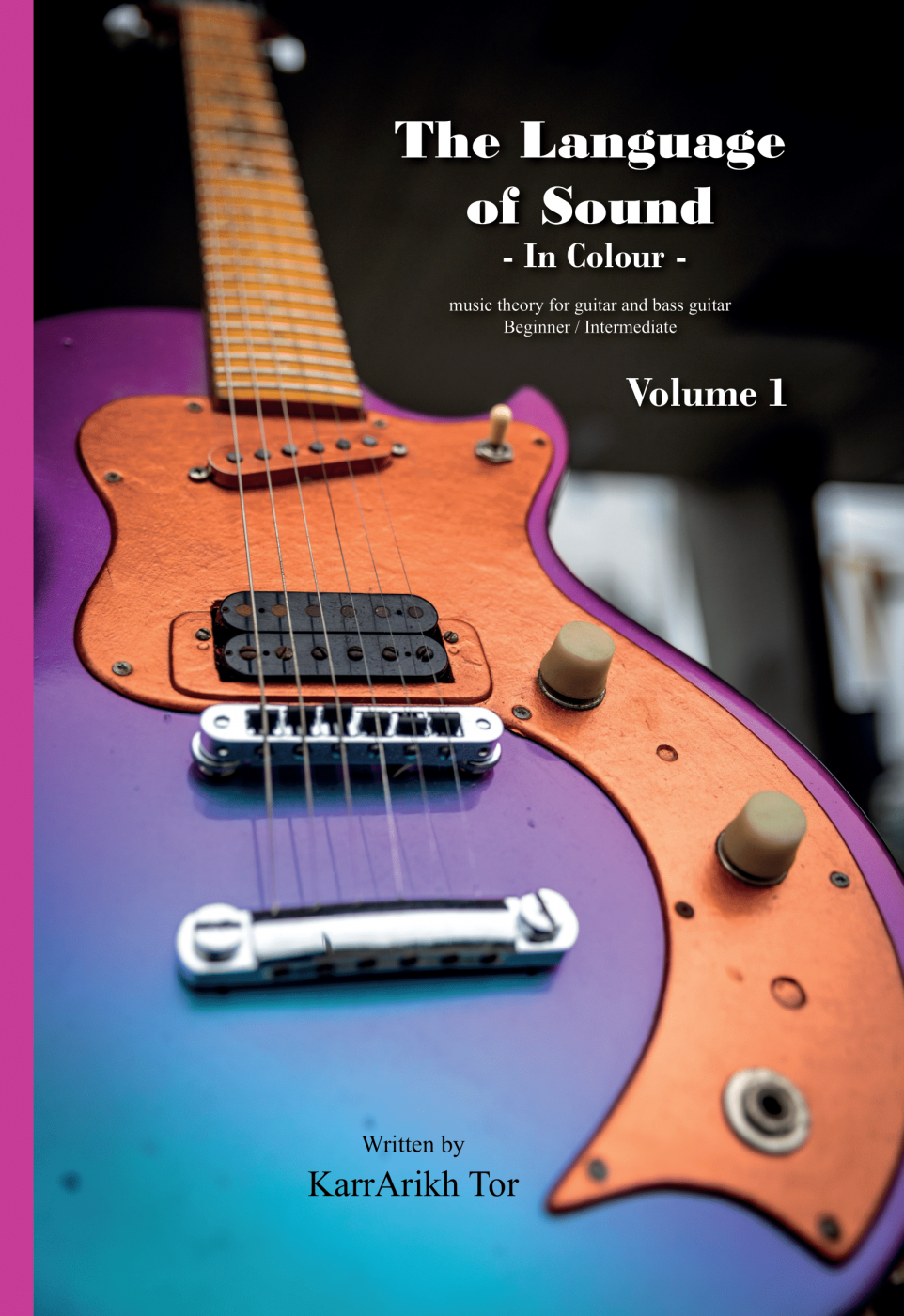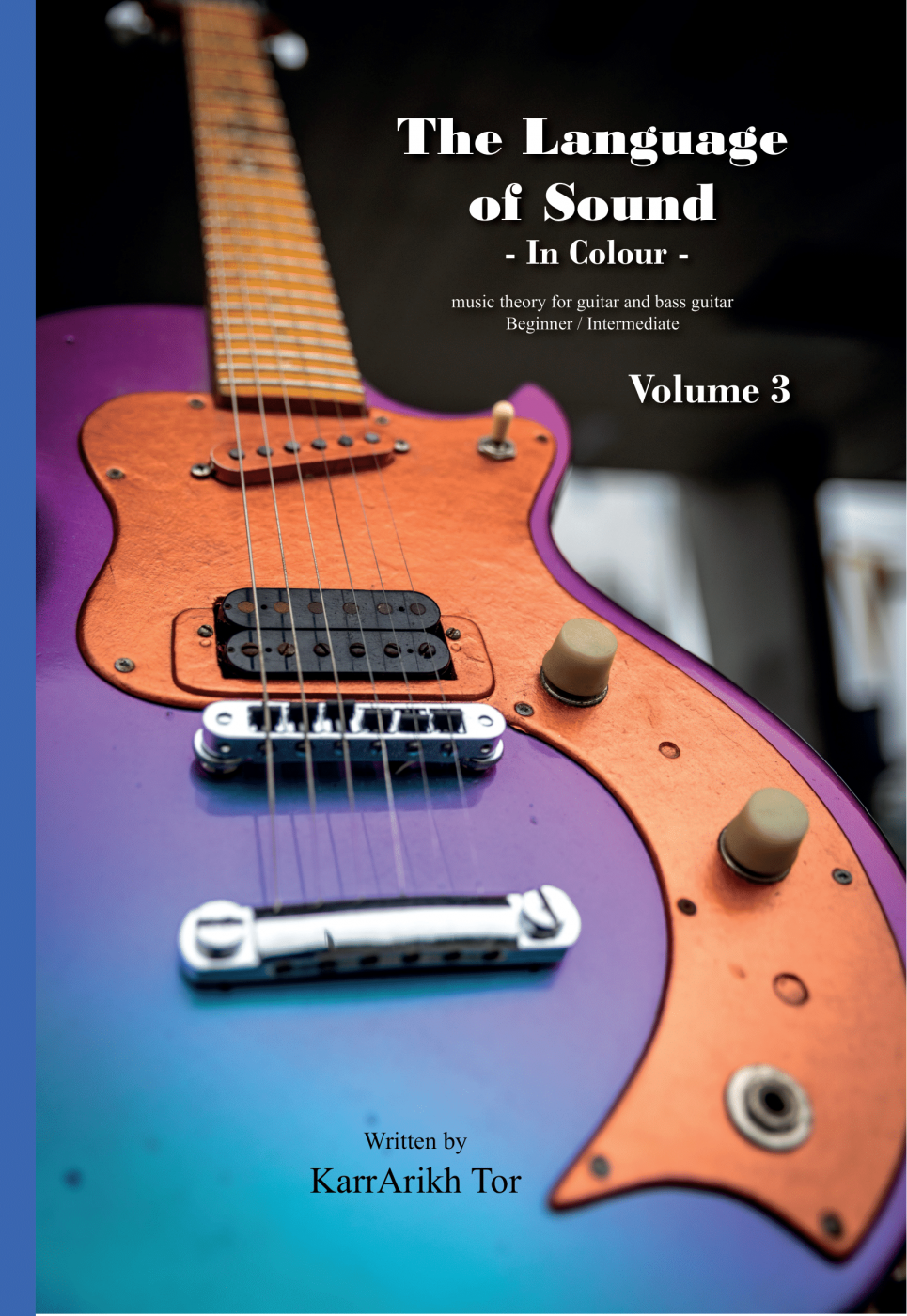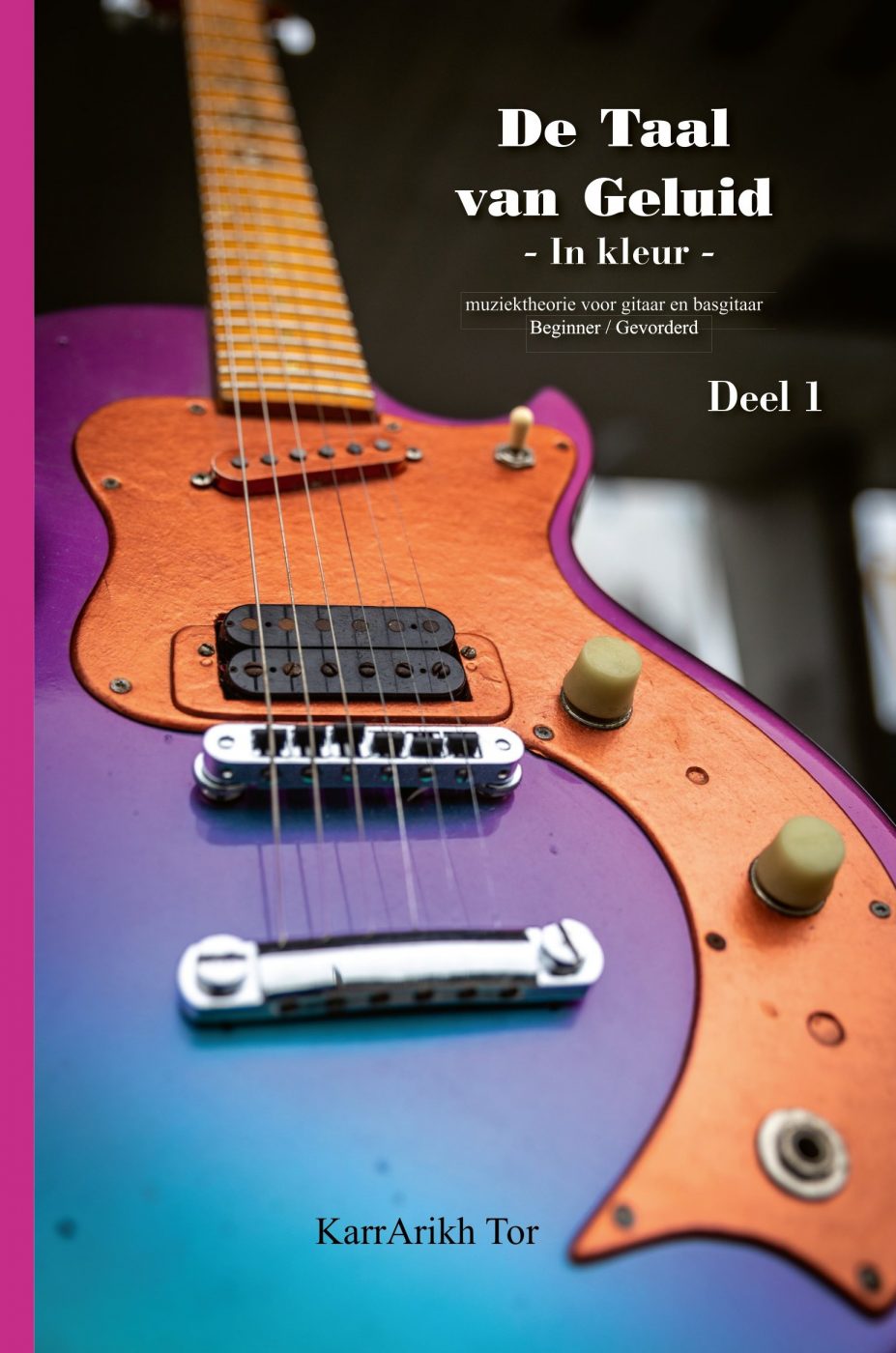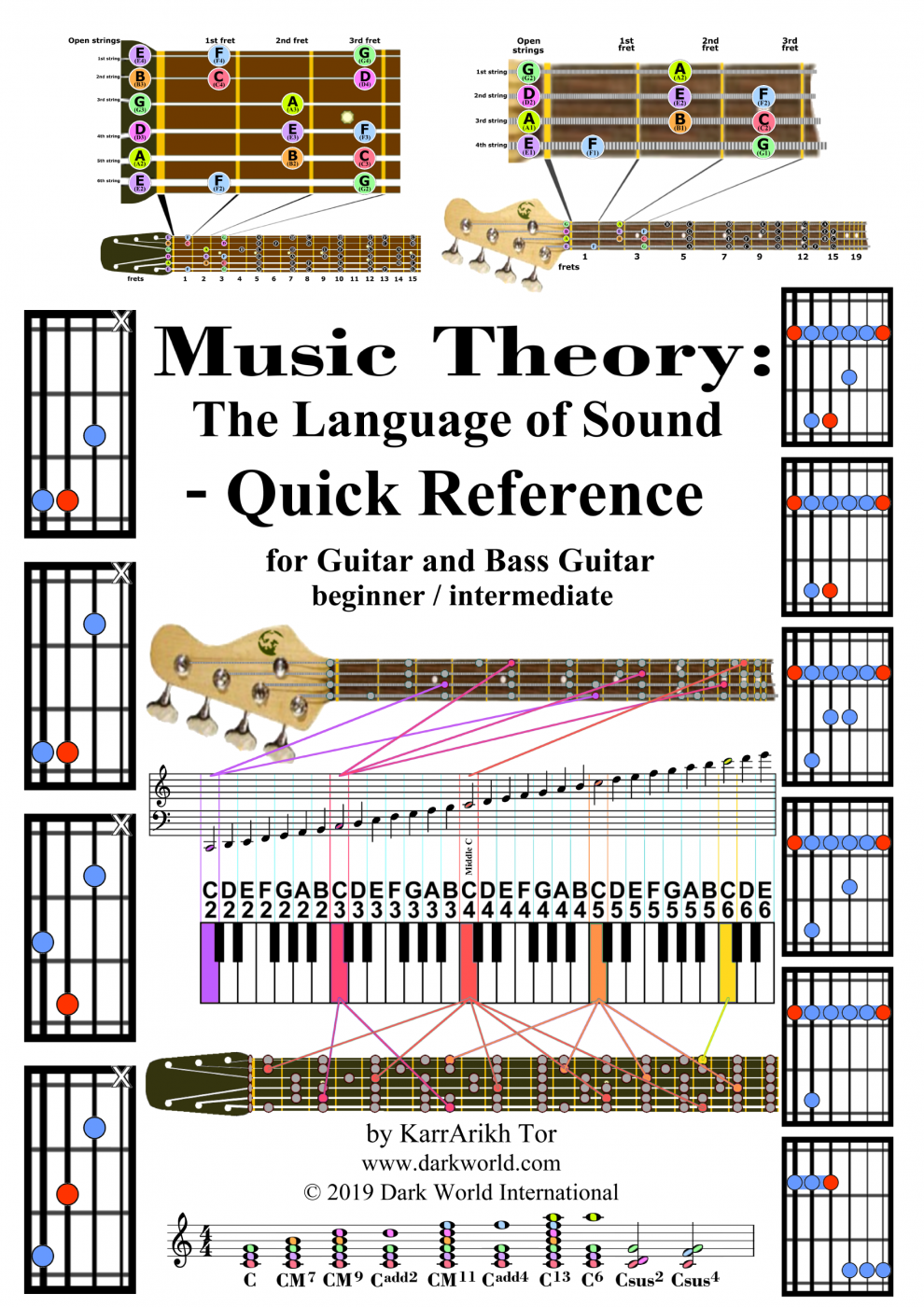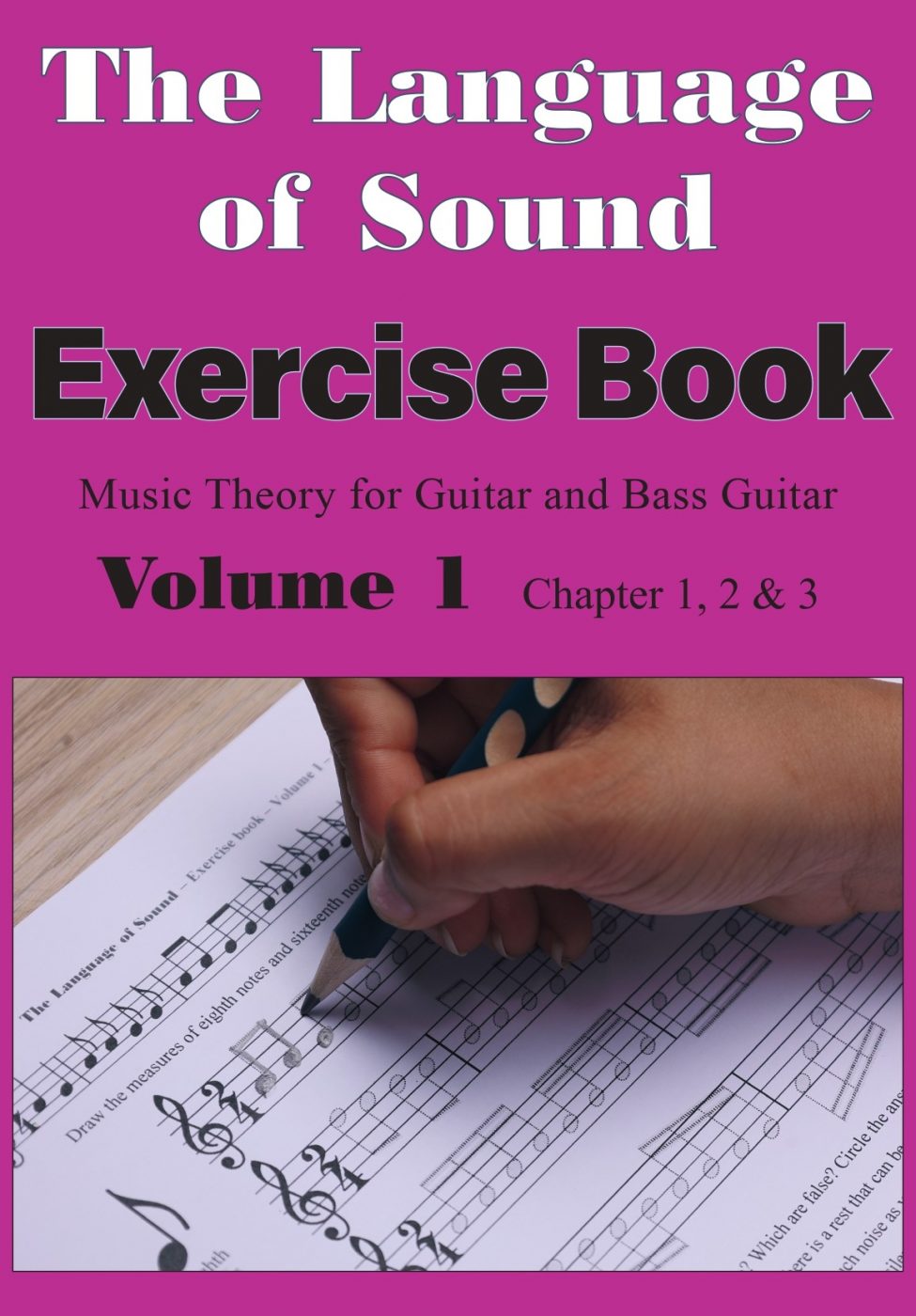The Language of Sound music theory books

Tired of fighting with your fellow band members because you don’t understand each other’s instruments? Do you find yourself soloing and not really knowing if what you’re playing is ‘right’? Do you wish you understood what you were playing so you could take your skills to the next level?
Music Theory: The Language of Sound, reveals the secrets of the guitar and bass guitar. It can be scary to get into music theory for a guitarist or bassist but this is a great place to start. You will never need another chord book or theory book again. Music Theory: The Language of Sound teaches you how to build chords from the root and play melodies in any Key. The graphics tie the fretboards of a guitar and bass guitar to the piano keyboard and sheet music, making it a valuable tool not just for guitarists and bassists but for every member in a band.
Music Theory: The Language of Sound
Dark World International music theory books are available through Boekenbestellen.nl (Pumbo.nl BV) or through online suppliers like Bol.com. You can order them from your local bookstore using the ISBN numbers if you can not find them on the shelves (located on the right side of the book titles in the list below).

List of music theory books available
In the English language
- Music Theory: The Language of Sound (full textbook), ISBN 978-90-828536-8-1
- Music Theory: The Language of Sound – in colour (full textbook) ISBN 978-90-828536-7-4
- The Language of Sound – in colour – volume 1, ISBN 978-90-828536-4-3
- The Language of Sound – in colour – volume 2, ISBN 978-90-828536-5-0
- The Language of Sound – in colour – volume 3, ISBN 978-90-828536-6-7
- Music Theory: The Language of Sound – Quick Reference, ISBN 978-90-828536-1-2
- The Language of Sound – Exercise book – volume 1, ISBN 978-90-833202-3-6
In the Dutch language
- De Taal van Geluid – in kleur – deel 1, ISBN 978-90-833202-0-5
- Muziektheorie: De Taal van Geluid – Naslaggids, ISBN 978-90-828536-0-5
The Language of Sound – in colour – Volumes contain:
Volume 1 contains chapters 1-3, and appendices from the full textbook. In Volume 2 are chapters 4-6 from the full textbook. And finally Volume 3 contains chapters 7-9 from the full textbook, and “Chords in the Key of…” appendix.
What is in the books?
CHAPTER 1 – INTRODUCTION, GRAND STAFF AND BASIC SYMBOLS
First chapter explains the basic theory behind Western Musical Traditions, treating music theory like a language. Introduced in this chapter are: Octave divisions, Whole steps, Half-steps, Accidentals, Clefs, Grand staff, Treble staff, Bass staff, Alto staff, Tenor staff, Time signature, Note types, Rests, and Tempo.
CHAPTER 2 – STANDARD TUNING, NOTES ON FRETS, AND TABLATURE
Second chapter shows where the natural notes (white keys) on a piano are located on the guitar and bass guitar fretboards and also on the Grand Staff. Introduced in this chapter are: Standard tuning, and Tablature.
CHAPTER 3 – SCALES, MAJOR KEY SCALE, POSITIONS ON FRETBOARDS, AND INTERVALS
Third chapter examines scales, particularly the Major Key scale, showing how we develop our scales from a tonic note, and where to find Major scales on the fretboards of guitars and bass guitars. Introduced in this chapter are: Ascending scale, Descending scale, Chromatic scale, Tonic note, Tonic scale names, Diatonic scales, Enharmonic Notes and Keys, Scale degrees, 15 Major Keys, and Intervals.
CHAPTER 4 – CHORDS BUILT FROM THE ROOT, AND ENHARMONIC CHORDS
Fourth chapter defines chords, showing all the chords that can be built from a root note. Introduced in this chapter are: Chords, Note stacks, Triad chords (including Major, minor, diminished and augmented chords), Chord Qualities, Chord Inversions, Seventh chords (including Dominant, Major, minor-Major, minor, augmented, diminished, and half-diminished seventh chords), Suspended chords, Added note chords, and Extended chords (including Ninth, Eleventh, and Thirteenth chords).
CHAPTER 5 – CHORDS BUILT FROM MAJOR SCALE, BAR CHORDS, AND POWER CHORDS
Fifth chapter continues from chapter four, defining and building chords naturally found in a Major Key scale. Introduced in this chapter are: Chords built from scale degrees (including all Major, minor, diminished, suspended, added note, and extended chords occurring naturally in a Major Key), Bar Chords for both guitar and bass guitar, Power Chords, and How to use bar chords.
CHAPTER 6 – MAJOR KEYS, KEY SIGNATURES, CIRCLE OF FIFTHS, MODES, AND MODIFIED MINOR KEYS
Sixth chapter examines how to use the 15 Key Signatures and how modes are built from the Major Key scale. Included in this chapter are: 15 Major Keys, Key Signatures, Circle of Fifths, Circle of Fourths, Modes, Ionian mode, Dorian mode, Phrygian mode, Lydian mode, Mixolydian mode, Aeolian mode, Locrian mode, Natural minor Key, Harmonic minor Key, and Melodic minor Key.
CHAPTER 7 – ADDITIONAL NOTATION FOR THE STAVES, AND ADDITIONAL NOTATIONS FOR TABLATURE
Seventh chapter examines additional notations that can be used on staves or in tablature. Introduced in this chapter are: Dynamic symbols (including Forte, Piano, Crescendo, Diminuendo, Fermata, Marcato, Sforzato, Tenuto, Portato, and Staccato), Octave shifts (using 8va, 8vb, 15ma, 15mb, 22ma, 22mb), Grace notes (Acciaccatura, and Appoggiatura), Tied notes, Slurs, Repeat measure symbol, Barlines, Brackets, Braces, Prima Volta, Seconda Volta, D.C. (Da Capo), D.S. (Dal Segno), Fine, Coda, and Segno.
CHAPTER 8 – CHORD ARRANGEMENTS, TRANSPOSING SONGS, MODES, AND PROGRESSIONS
Eighth chapter examines adding chord arrangements to a melody, transposing songs and working with modes in a chord arrangement.
CHAPTER 9 – ENHARMONIC CHORDS AND NAMING CHORDS
Ninth and final chapter examines naming chords, choosing between enharmonic chord names, and naming a group of notes as a chord.
The YouTube channel, https://www.youtube.com/c/musictheorythelanguageofsound, accompanies the book, Music Theory: The Language of Sound. This channel shows aural video examples of staves, chords, progressions, arrangements and melodies written about in the book.
